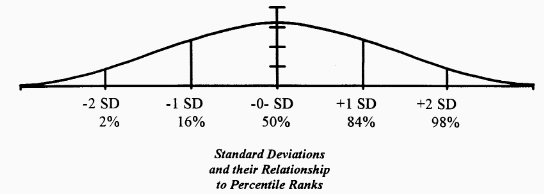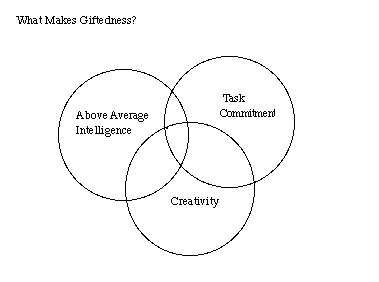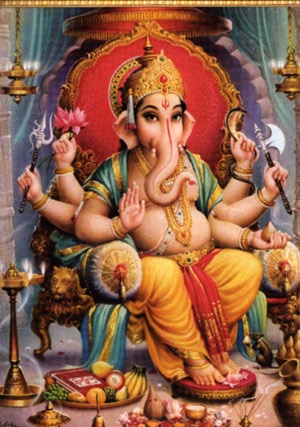| ESE504 : The Class : Advanced CD : Intellectually Gifts | |||||
 Intellectually
Gifted and Talented Youth
Intellectually
Gifted and Talented Youth
"Once we believe in ourselves, we can risk curiosity, wonder, spontaneous delight or any experience that reveals the human spirit." - e. e. cummings
There is controversy surrounding education of our best and brightest minds and our most talented youth.. The definition of gifted and talented, adopted by Title XIV, Public Law 103-382 says:
The term "gifted and talented" when used in respect to students, children or youth means students, children or youth who give evidence of high performance capability in areas such as intellectual, creative, artistic or leadership ability, or in specific academic fields, and who require service or activities not ordinarily provided by the school in order to fully develop such capabilities. ( To read federal material and access the Javits act, click here)
Though the law and definition acknowledge the importance of serving these youth, it does not require that services be provided. Some States and districts do have policies and funding for providing services to gifted and talented youth.
![]()
When services are provided, they are usually targeted to the top 2 % of students. Originally, IQ scores were used and students who scored at 130 points or above were eligible to participate. On the bell curve, that is represented by the area that is the tail - from +2 standard deviations above the mean or middle area.

Understanding the gifted and talented youngster is confusing, sometimes. Testing this group of young people and putting them in an accelerated program gives mixed results. Sometimes the students really excel, but lots of times they do not. Being very bright does not mean the same as being smart, or wanting to work hard, or having the ability to use the intelligence in a real life constructive way. This is talked about in an article published in Parent's Magazine called "Little Geniuses" by T. Armstrong.
That's not all. It does not mean that you can earn a good living, that you are more likely to be valedictorian or that you will someday be famous or likely to succeed. No wonder people have trouble paying for more services when we can't prove that it will make society any better or help a specific student more than staying in the class. Being smart doesn't suggest a personality type either. Some are dedicated, some selfish. Some are extroverts, and some are very quiet. Some love to be in a group with others, and some are clannish or reclusive. Just as in the other areas of special education, the child is a child first, and happens to have extraordinary talents, gifts or intellectual prowess.

In fact, what we also found out is that gifted people may be very capable in one area, and quite ordinary or deficient in another and it is a cluster of skills or abilities that comes together to create extraordinary outcomes. That takes us to what Renzulli proposed. He suggested that giftedness involves the interaction of three sets of characteristics: above average intellectual ability, creativity and task commitment.

![]()
|
Intelligence
|
Creativity
|
Task Commitment
|
|
Advanced vocabulary Good memory Learns quickly and easily Large fund of information Generalizes skillfully Comprehends new ideas easily Makes abstractions easily Perceives similarities, differences, relationships Makes judgments and decisions |
Questioning; very curious about many topics Has many ideas (fluent) Sees things in varied ways (flexible) Offers unique or unusual ideas (original) Adds details; makes ideas more interesting (elaborates) Transforms or combines ideas Sees implications or consequences easily Risk-taker; speculates Feels free to disagree Finds subtle humor, paradox or discrepancies |
Sets own goals, and standards Intense involvement in preferred problems and tasks Enthusiastic about interests, activities Needs little external task motivation Concentrate on interests, projects High level of energy Perseveres; keeps working Completes, shares products Eager for new projects,challenges Assumes responsibility - Treffinger, 1986 |
![]()
 Gardner's
Seven Intelligences includes capabilities in seven areas.
Gardner's
Seven Intelligences includes capabilities in seven areas.
Linguistic: The ability to use words effectively both orally and in writing (e.g., writer, orator).
Logical-Mathematical: The ability to use numbers effectively and to see logical relationships and patterns (e.g., mathematician, scientist, computer programmer).
Spatial: The ability to visualize and to orient oneself in the world (e.g., guide, hunter, architect, artist).
Bodily, Kinesthetic: The ability to use one's body to express ideas; to make things with hands; and to develop physical skills (e.g., actor, craftsperson, athlete).
Musical: The capacity to perceive, discriminate, transform and express musical forms (e.g., composer, musician).
Interpersonal Intelligence: The ability to perceive and make distinctions in the moods, intentions, motivations and feelings of other people (e.g., counselor, political leader).
Intrapersonal Intelligence: Self-knowledge and the ability to act adaptively on the basis of that knowledge (e.g., psychotherapist, religious leader)
![]()
Robert Sternberg (1988) sees intelligence as a layering of different skills that equate to combinations of individual preferences from three levels. These areas include:
1. Functions of governments of the mind - Legislative - creating, planning, imagining, and formulating. Executive - implementing and doing. Judicial - judging, evaluating, and comparing.
2. Stylistic preferences - Internal means preferring to work alone, or external, meaning a preference for collaboration
3. Forms of mental self-government - Monarchic people prefer goals to be singular, and deal best with one goal or need at a time. Hierarchic people enjoy focusing on multiple goals simultaneously and recognize that all goals cannot be fulfilled equally. These people can prioritize goals easily. Oligarchic people deal with goals that are of equal weight well, but they may have difficulty prioritizing goals of different weights. Anarchic people depart from expected thinking and organizing, neither liking or understanding the need for rules and regulations. They operate without rules or structure, and tend to work most effectively when creating their own problem-solving techniques. - Sternberg, Robert (1988) The Triarchic Mind: A New Theory of Intelligence. NY: Viking Press.
His theory has expanded beyond this model and in work with Li-fang Zhang (1995) he suggests five criteria as being necessary:
Excellence - superior in comparison to peers in at least one dimension
Rarity - ability is not only superior, but quite unusual and rare compared to others who have a similar gift
Productivity - accomplishments, not just the promise of potential products and outcomes
Demonstrability - assessments can be given that validate the existence of the gifts and unusual ability
Value - the culture desires and appreciates the ability and honors, acquires or appreciates the gifts and productivity

Try surfing some of these areas about gifted and talented youth.
|
Subject
|
|
|
Defining and describing gifted plus links Identification process Comprehensive bibliography Gifted program in a high school National Association of Gifted and Talented Overview and discussion of Gardner and Renzulli TAG Family Network Links to material about Gifted and Talented Curriculum links Resources and information for gifted and talented Bibliography on Limited English Proficiency and giftedness
|
Meeting needs of Students with a minority language Bibliography from Johns Hopkins Tools and activities plus great links - "On the right track" SERI links on gifted Australian education of gifted and talented GT World - parent link National Research Center on gifted and talented Teacher skills for working with gifted and talented Gifted and LD Gifted and ADHD What kind of thinking do you do best? Inventory |
![]()
Early signs that might alert parents or teachers to consider a child for identification:
![]() Abstract reasoning
and problem-solving skills
Abstract reasoning
and problem-solving skills ![]() Advanced progression through developmental milestones
Advanced progression through developmental milestones ![]() Strong, advanced vocabulary for chronological age
Strong, advanced vocabulary for chronological age ![]() Heightened Curiosity
Heightened Curiosity ![]() Early and extensive language development
Early and extensive language development ![]() Early recognition of parent figures (for example, smiling)
Early recognition of parent figures (for example, smiling) ![]() Outstanding memory - sometimes eidetic, often recalling large and complex
sets of facts and ideas
Outstanding memory - sometimes eidetic, often recalling large and complex
sets of facts and ideas ![]() Intense to the point of total absorption at times
Intense to the point of total absorption at times ![]() Perceives subtle cause / effect relationships and may intuitively utilize
them in stories, jokes, play on words
Perceives subtle cause / effect relationships and may intuitively utilize
them in stories, jokes, play on words ![]() May be aware of others with an advanced sense of justice or fairness earlier
than peers
May be aware of others with an advanced sense of justice or fairness earlier
than peers ![]() Often
aware of global issues and interconnectedness of seemingly disparate ideas
Often
aware of global issues and interconnectedness of seemingly disparate ideas
![]() Enjoyment and
rapidity of learning
Enjoyment and
rapidity of learning ![]() Excellent sense of humor, awareness and use of irony, even sarcasm
Excellent sense of humor, awareness and use of irony, even sarcasm ![]() Extraordinary memory
Extraordinary memory ![]() High activity level and unusually coordinated for age
High activity level and unusually coordinated for age ![]() Intense reactions to noise, pain, as frustration and distraction
Intense reactions to noise, pain, as frustration and distraction ![]() Less need for sleep in infancy
Less need for sleep in infancy ![]() Long attention span
Long attention span ![]() Sensitivity and compassion
Sensitivity and compassion ![]() Unusual alertness in infancy
Unusual alertness in infancy ![]() Vivid imagination (for example, imaginary companions)
Vivid imagination (for example, imaginary companions) ![]() Multiple layers of interest and expertise
Multiple layers of interest and expertise
![]()
|
Findings outlined in the work "Toward a New Paradigm for Identifying Talent Potential" by Dr. Mary M. Frasier, Dr. A. Harry Passow * Youngsters with talent potential are found in all cultural groups, across all economic strata, and in all areas of human endeavor. * New constructs of giftedness reflect a multifaceted, multicultural, multidimensional perspective and are defined by traits, aptitudes and behaviors to be nurtured rather than by static test performance. * There are absolute attributes of giftedness, traits, aptitudes, and behaviors which characterize high performance cross-culturally as well as specific attributes or behaviors which manifest themselves in particular cultural contexts or settings. * Increased sensitivity to and understanding of culturally determined and environmentally affected behaviors will help educators to recognize and interpret performance indicators of talent potential in the context in which they are displayed. * The use of multiple criteria and authentic assessment techniques--instruments and assessment tools other than intelligence and achievement tests--is widely advocated. * The provision of rich learning opportunities for all students provides a means for children to display their gifted behaviors and talent potential. http://www.ucc.uconn.edu/~wwwgt./fraspass.htm
Sometimes gifted children are also learning disabled. There are also a number of behaviors that can be misunderstood or misread as ADHD. The following lists help distinguish between behaviors that are associated with each: BEHAVIORS ASSOCIATED WITH ADHD (BARKLEY, 1990) Poorly sustained attention in almost all situations Diminished persistence on tasks not having immediate consequences Impulsivity, poor delay of gratification Impaired adherence to commands to regulate or inhibit behavior in social contexts More active, restless than normal children Difficulty adhering to rules and regulations BEHAVIORS ASSOCIATED WITH GIFTEDNESS (WEBB, 1993) Poor attention, boredom, daydreaming in specific situations, especially commonly repeated settings Low tolerance for persistence on tasks that seem irrelevant Judgment lags behind development of intellect Intensity may lead to power struggles with authorities High activity level; may need less sleep Questions rules, customs and traditions from http://www.kidsource.com/kidsource/content/adhd_and_gifted.html |
![]()
 Tips and Strategies
Tips and Strategies
|
Educational
Interventions
|
Personal
Notes
|
|
Career planning for youth who are gifted Adolescence, peers and adjusting to giftedness Supporting emotional growth in children who are gifted Supporting social growth Nurturing giftedness Mathematical talent - identification and nurturing English teaching and gifted Fostering academic creativity Leadership development in gifted Interventions for underachievement in gifted Resources for gifted and talented Blue ribbon learning sites Self assessment of gifts and talents Lesson plans and resources for teaching gifted and talented |
![]()
Development is quite advanced in some ways, and fairly normal in other areas. The intellectually gifted youngster often has a strong interest in philosophical questions and may spend a great deal of time questioning systems, customs, traditions, rules and laws including religious beliefs. It is not unusual for these youth to explore world religions and develop an interest in a myriad of rituals and belief structures.

Since so many students are involved in philosophical development, a process curriculum that supports growth toward high ideals can be a real support for gifted and talent youth. These ideals are suggested by L. Silverman (1993).
| Moral courage | Compassion | Authenticity | Altruism |
| Reflective judgment | Responsibility | Commit to goals | Integrity |
| Sense of self efficacy | Global awareness | Moral development | Wisdom |
| Contribute to society | Self-actualization | Ethical behavior | Creativity |
| Emotional wellness | High ideals | Sense of wonder | Autonomy |
![]()
|
Student action
|
Needs |
Creative solution
|
| Student has all the answers and yells out responses to questions |
Student needs validation, attention, stimulation and may see adult as a peer |
Start a notepad for student to dialogue answers or add dimension to questions and then give separate time to the student to discuss perspectives |
| Always 3 assignments ahead |
Needs more stimulation and challenge, faster pace to learning |
Consider putting the child in charge of developing a curriculum and working in several intelligences on concepts rather than rapid linear progress |
| Student is sarcastic | Emotional development and social insightfulness | Many gifted youth spend their childhood in an adult mode, not learning how to relate to peers. In addition, many do not "play" with peers, since their interests do not match age mates, so may not learn empathy, but can be helped to gain servant leadership skills |
Fill in the next three cell rows, using the ideas you gain from experience, from materials in the text and in your web searches. Identify a likely student behavior that may hamper learning and then go through the process of defining needs, then finding a solution that allows everyone to get needs met [25 points have been allotted for this activity].
Education for gifted and talented youngsters has evolved over the past decade.
![]()
The Current Ideal Model
|
Identification
|
Goals
|
Programming
|
| A wide range of exceptional gifts | Nurture potential | Encourage gifted behavior |
| Find strengths | Enhance quality of abilities | Flexible options |
| Include those who wish support | Provide wide range of options | Enhance current curriculum |
| Look at talents and multiple intelligences | Enhance potential | Inclusionary |
| Validate leadership and emotional IQ | Motivate growth and empowerment | Responsive to variety |
![]()
 Book Lists
Book Lists
Clark, R.W. (1971). Einstein: The life and times. NY: World Publishing.
Churchill, R.S. (1988). Winston S. Churchill. London: Heinemann.
Delisle, J.R. (1984). Gifted children speak out. NY: Walker & Co.
Eberstadt, F. (1991. Isaac and his devils. NY: Knopf.
Goertzel, V., & Goertzel, M.G. (1962). Cradles of eminence. Boston: Little, Brown, & Co.
Kerr, B.A. (1985). Smart girls, gifted women. OH: Ohio Psychology Publishing Co.
L'Engle, M. (1962). A wrinkle in time. NY: Farrar, Straus, & Giroux.
Meir, G. (1975). My life: by Golda Meir. NY: Putnam.
Stone, B. (1988). Been clever forever. NY: Harper & Row.
Stone, I. (1961). Agony and ecstasy. NY: Doubleday.
Vonnegut, K. (1968). Welcome to the monkey house. NY: Delacorte Press.
![]()
Videos and Movies
| Little Miss Marker | Wee Willie Winkie | National Velvet |
| Paper Moon | Goonies | Weird Science |
| Little Man Tate | Powder | Class Act |
| Searching for Bobby Fischer | Good Will Hunting | Amadeus |
![]()
Bibliographies
| Selected bibliography | Gifted Ed articles | Papers and presentations |
| Multi-linguistic reading sites | Teaching and parenting gifted | SERI sites |
| Yahoo sites | Gifted readers, article and bib. | K-12 gifted ed links and bib. |
![]()
![]() Activity
List
Activity
List ![]()
1. Read a book written by a family member of a gifted or talented person, telling about their personal insights and challenges. Make a list of the ways a teacher might support the parent experiences. Make a second list of things parents might tell an educator about a child. [50 points]. You may want to read a book written by a gifted young person. Look for and make a list of depths and insights that are precocious and unusual in someone that age [50 points]. Read a book by Madeline L'Engle such as Wrinkle in Time. This portrays a family of gifted youth and their support of a brother who is a genius. Contrast L'Engle's view of a family of gifted children with the things you would expect. [75 points].
2. Visit a program or magnet school for gifted or talented and spend a minimum of 4 hours observing the interaction and different youngsters. As part of the observation experience, identify at least three student strengths. Look for the youngster's interests and determine some of the contact points that could be used to engage students. [25 points per hour for observing; 50 points for the adaptation summary].
3. Watch Little Man Tate, or Good Will Hunting, (movies) for 50 points and send a review of the characterization of giftedness for another 25 points. A movie about a youth with unusual talents is Powder. You may watch and report on this movie, too. Link to additional choices.
4. Learn about gifted and musically talented young people. Music is an area where prodigies are recognized and honored. Try to find an opportunity to watch a performance by a young musician and read some of the reviews of performances or recordings. Develop a paragraph stating some of the statements made about young artists and then add your personal feelings about their techniques, strengths and weaknesses that might come from their youthfulness. [50 points]
5. Identify a score of commonly held fallacies about gifted and talented and then provide three fact based beliefs about people with extraordinary abilities. [15 points]
6. Learn about gifted and talented young actors and actresses. This is another area where children can be recognized while still minors. Examples of child stars are legendary. Make a list of ways to support and protect them and their childhood, provide opportunities for exercising their gifts, and also protect their future as successful adults. Feel free to write a paper, a critique or a one minute essay expressing, defending, or even providing research to justify your position. Remember to give yourself 25 points per hour for your work.
7. Learn about gifted and talented young athletes. This is an area where children excel while still minors. Examples of young sports figures are legendary. Make a list of ways to support and protect them and their childhood, provide opportunities for exercising their gifts, and also protect their future as successful adults. Feel free to write a paper, a critique or a one minute essay expressing, defending, or even providing research to justify your position. Remember to give yourself 25 points per hour for your work.
8. Most schools have a policy preventing youth from playing sports based on poor academic performance. In this case, sports are considered an extracurricular activity. Not only do schools have a policy, but there are many sports programs and parents who promote this idea. What are the pros and cons? How do we justify preventing the exercise of this gift without setting the same limits on music or academics -- not doing well in sports? well you can't take algebra this semester then. Feel free to write a paper, a critique or a one minute essay expressing, defending, or even providing research to justify your position. Remember to give yourself 25 points per hour for your work.
9. Read several biographies about unusual and gifted personalities. Compare and contras the things that lead to greatness and list those things that helped the person to excel. [25 points per hour].
10. Remember to feel free to develop your own personal response to the material. Allot yourself approximately 25 points per hour for your work.
|
How do we recognize and protect genius? How many gifts are lost through education? How many gifts and talents are ignited through great teaching and mentoring? We are the future - we teach! |
 |
You should now:
Go back to Characteristics
E-mail J'Anne Ellsworth at Janne.Ellsworth@nau.edu
Course developed by J'Anne
Ellsworth
![]()
Copyright © 1999
Northern Arizona University
ALL RIGHTS RESERVED
